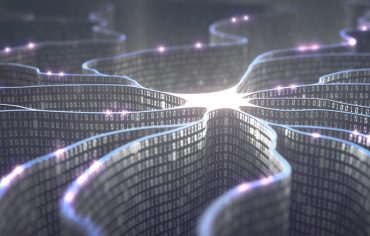At the Intersection of IoT, Law & Insurance

Peter Westerman, VP Market Development
One of the most interesting aspects of my work at ALM involves looking at how technology impacts the professional markets we serve: Legal, Insurance, Finance and Real Estate. As a company with readers and sponsors at the forefront of law and insurance, we’re in a unique position when looking at the impact of the Internet of Things. Libraries are being written about all aspects of IoT. In this post I simply want to address aspects of the IoT that have grabbed my attention at the intersection of technology, law and insurance.
While the overarching technology innovations driving IoT are interesting, its applications in specific industries to create new products and services–and how those industries are responding–are more interesting. Most readers of this probably have more than a beginner’s understanding of IoT and its applications within the domains where they work, so I thought I’d share what we’re seeing at ALM and begin to anticipate what will happen at the intersection of IoT, The Law, and Insurance Markets in the not too distant future.
First, it’s important to emphasize that we live in exponential times. Technology innovation–and its diffusion–is happening at rates more rapid than at any time in human history and these rates will only accelerate. Change at this scale and speed will be very disruptive. Some of us will benefit, others will not. Disruptions of this magnitude challenge institutions, and in the US–a country built on the rule of law–our legal, regulatory and governing institutions will be impacted.
Just like hardware, software and network engineers, data scientists and cybersecurity experts, Legal and Insurance professionals have a special role to play in all aspects of the Internet of Things. When new technologies are deployed as quickly and widely as we will see with the IoT, Legal and Insurance pros need to weigh in early and often on the application of it–while also looking over their shoulders at how these technologies will impact their own jobs.
Here are some emergent areas where we see prominent roles for the communities ALM serves.
Data Security & Pervasive Connected Devices
The increased security risks of data breaches, data spoofing, and device hijacking (among others) have been discussed with increasing frequency in the media, and among professionals in the trades. But, beyond the current state of affairs, let’s focus on some of the issues at the intersection of law and insurance.
Low cost devices, widely deployed in diverse settings connected to other devices and the Internet sounds like a recipe for a generation of product liability and class action lawsuits. What’s a company to do if devices that are unreachable in the wild are breached or fail – possibly bringing down other devices–and it happens in thousands or millions of devices?
While it’s tempting to say the manufacturer will probably allow over the air software patches for problems like this, that in itself opens the ports that could be used for a breach.
Also, suppose those devices can’t just be blocked or ignored if they malfunction because they are part of a complex web of devices whose combined performance and telemetry is required for the system(s) they are serving to properly function. Suppose all the cheap little devices fail in subtle ways that make the corpus of data a system requires to function properly become incomplete or corrupt?
While early industry adopters of IoT – with help from companies like Bosch, Siemens, Honeywell, IBM, Cisco, and a list of others too long to mention here – have benefited from IoT, many had robust risk management policies in place that could be adapted to IoT (example manufacturing). Many of the new market entrants (both buyers and sellers) have thin records related to risk and compliance — and even in some industries with mature risk oversight, IoT will introduce new risks not easily handled by simply updating existing practices — or a re-thinking of the way existing risk policies are applied. Networked medical devices have become a recent example of the latter.
Another aspect of IoT is the growing recognition that the data and analytics that will drive these new systems is itself intellectual property, the basis for a new generation of data products and services. Given the distributed nature of IoT technologies, they will have significant threat surfaces that need to be protected to ensure the security of the IP they are generating.
What trends are you noticing? How is your business reacting? In my next post I’ll look at some of the implications for IoT for Life Insurance and Wellness programs.
Peter Westerman
Peter is responsible for developing new products and product extensions for the customers ALM serves, as well as analyzing reader behavior and usage patterns. He is currently driving several initiatives related to impact of technology on the markets served by ALM including cybersecurity, Internet of Things, Digital Automation, and Big Data & Analytics. Peter has more than 25 years of experience managing all aspects of digital transformation of business-to-business information products, including live events, web sites, research, and publications.
